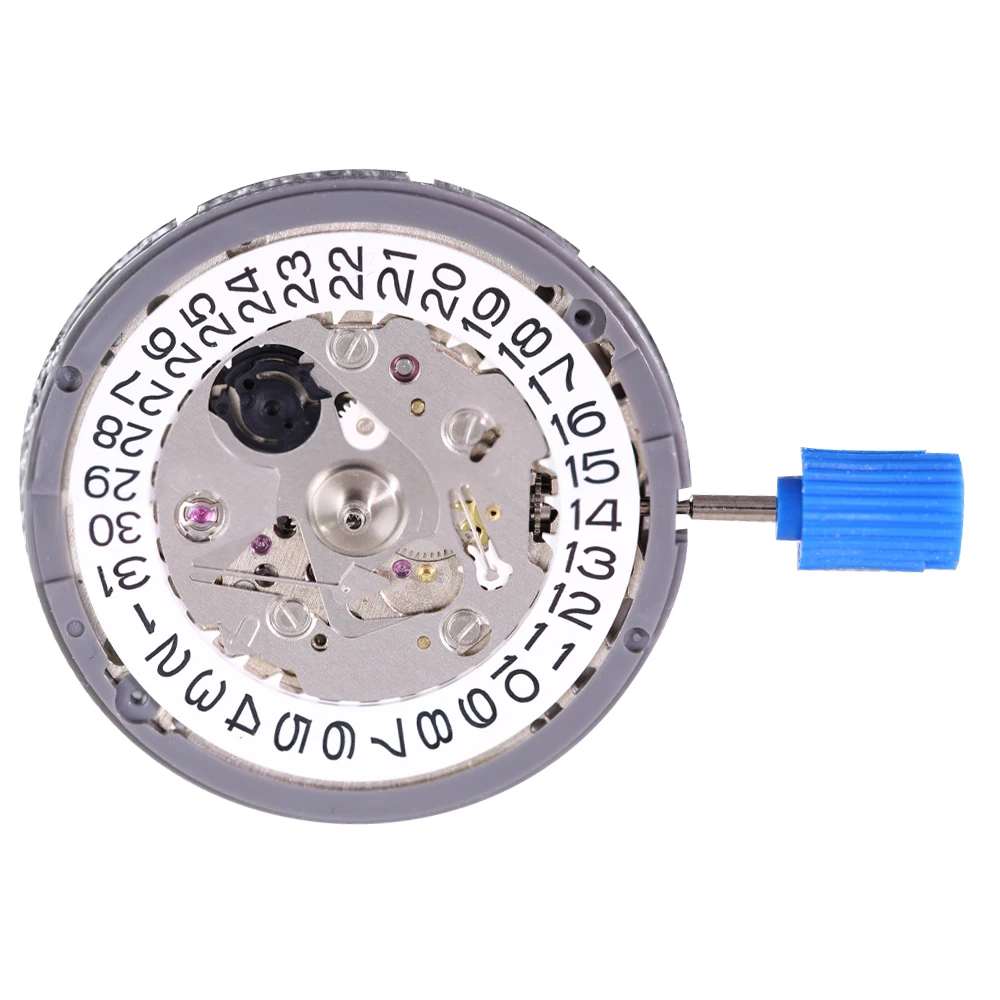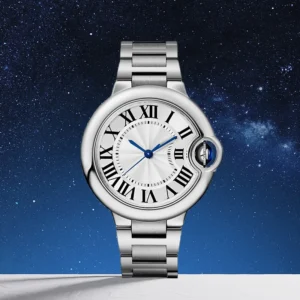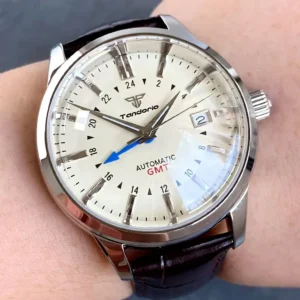Introduction: The Rise of Ultra-Thin Timepieces
The world of horology has witnessed a remarkable transformation over the decades, with one of the most striking developments being the progressive reduction in watch thickness. Today, a “thin” watch typically measures under 10mm in thickness, with ultra-thin models impressively coming in below 5mm (less than 0.2 inches). This evolution represents a significant departure from the bulky pocket timepieces of yesteryear, which often exceeded 15mm (0.6 inches) in thickness.
What makes this trend particularly fascinating is an apparent paradox: as watchmaking technology has grown more sophisticated and complex, timepieces have actually become slimmer rather than bulkier. This counterintuitive development stems from three primary drivers that have revolutionized modern watchmaking: technological innovation, shifting aesthetic preferences, and enhanced focus on comfort and wearability.
The journey toward thin case design in modern watches has been marked by ingenious engineering solutions, material science breakthroughs, and manufacturing precision that early watchmakers could scarcely have imagined. This pursuit of thinness has become more than a technical achievement—it’s now recognized as a definitive hallmark of horological excellence, representing the perfect marriage of form and function.
The Historical Evolution: From Pocket to Ultra-Thin Wristwatches
The quest for slimmer timepieces began long before the wristwatch gained popularity. Early pocket watches of the 16th and 17th centuries were necessarily thick, often measuring over 0.8 inches (20mm) due to their primitive movements. These early timepieces featured stacked gear trains, bulky fusee chains for power regulation, and large balance wheels—all requiring substantial space.
A revolutionary step forward came in the 18th century with Jean-Antoine Lépine’s innovative caliber design. Lépine reimagined watch architecture by removing the upper plate and replacing it with individual bridges, instantly reducing thickness and setting the foundation for all modern watch movements. This design principle—known as the Lépine caliber—remains influential in watchmaking today.
The early 20th century saw prestigious manufacturers like Jaeger-LeCoultre and Vacheron Constantin competing to create increasingly thin movements. JLC’s remarkable Calibre 145 achieved a thickness of just 0.054 inches (1.38mm) in 1907, an astonishing feat for the time. The competition intensified in the mid-century, with Piaget emerging as a dominant force in ultra-thin watchmaking. Their groundbreaking Calibre 9P manual-winding movement (0.079 inches/2mm) and 12P automatic movement (0.091 inches/2.3mm) from the 1950s-60s set new benchmarks that influenced the entire industry.
These historical developments laid crucial groundwork for modern ultra-thin technologies, establishing principles that continue to guide the engineering behind slim watch movements today. The evolution from pocket watches to wristwatches also accelerated this trend, as the smaller format demanded more efficient use of space.
Advanced Movement Architecture: Rethinking Watch Design
Modern ultra-thin watches represent a complete reimagining of traditional movement architecture. Where conventional watch movements followed a predictable layered construction—dial, hands, movement, case back—today’s thinnest timepieces employ revolutionary integrated designs that blur these distinctions.
One of the most significant innovations has been the integration of the case and movement as a unified structure. In some groundbreaking designs, the caseback actually functions as the movement’s mainplate, eliminating redundant elements and saving precious millimeters. This approach represents a fundamental departure from centuries of watchmaking tradition where movements and cases were designed separately.
The architecture of the movement itself has also been completely reconceptualized. Traditional bridge structures have been streamlined or eliminated, with some manufacturers adopting peripheral components that sit around rather than above the movement. Single-plane construction—where components are arranged side by side rather than stacked—has become increasingly common in ultra-thin watches.
Gear trains, which traditionally required significant vertical space, have been reimagined with thinner wheels and optimized tooth profiles that transmit power just as efficiently despite their reduced dimensions. These modifications present substantial design challenges in ultra-thin watches, requiring watchmakers to balance thinness with reliable functionality.
Innovative Winding Systems: The Quest for Efficiency
The winding system represents one of the most significant barriers to achieving extreme thinness in automatic watches. Traditional self-winding mechanisms add substantial height—typically 0.118-0.157 inches (3-4mm)—due to their full-sized oscillating weights that sit atop the movement.
The development of micro-rotor systems marked a watershed moment in thin watch design. These dramatically smaller rotors (often just 0.059 inches/1.5mm thick) are integrated into the plane of the movement rather than sitting on top, maintaining winding efficiency while significantly reducing thickness. Brands like Universal Genève pioneered this approach in the 1950s, with many luxury watchmakers adopting similar systems today.
Even more revolutionary are peripheral rotor systems, where the winding weight circles the movement’s perimeter rather than overlaying it. This design maintains the efficiency of a full-sized rotor while adding minimal thickness to the watch. Manual-winding mechanisms have also been optimized for thinness, with redesigned crown works and winding stems that require minimal vertical space.
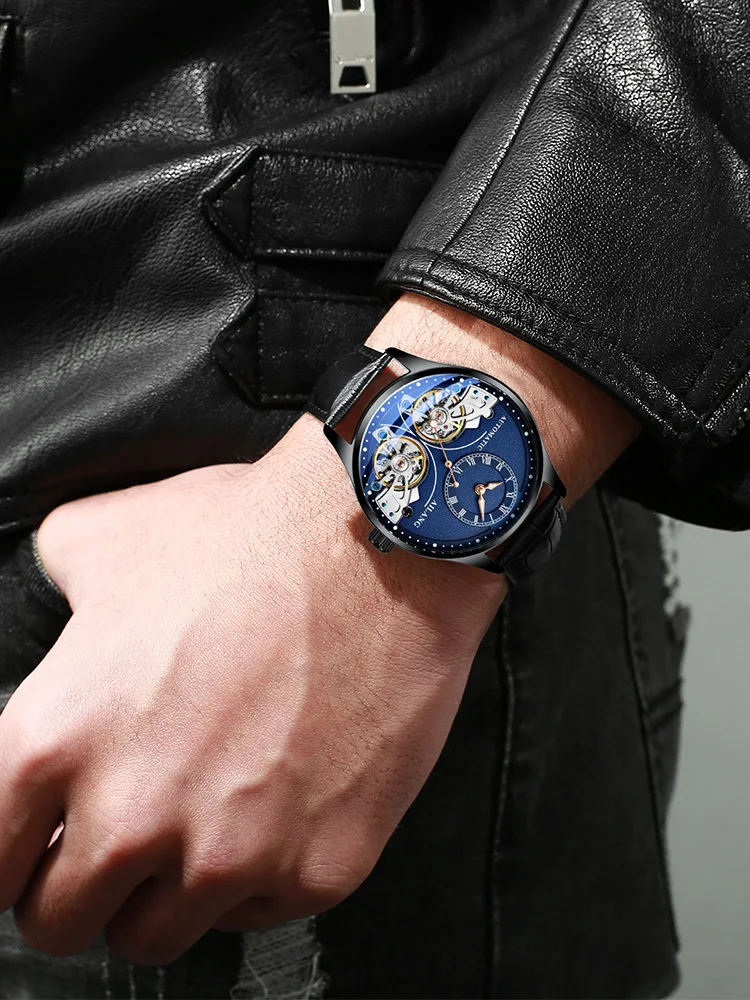
These innovative winding solutions exemplify how watchmakers have overcome traditional design constraints to achieve the benefits of slim watch cases, delivering both technical efficiency and aesthetic elegance in impressively compact packages.
Revolutionary Materials: Enabling Unprecedented Thinness
Traditional watchmaking materials like brass, steel, and nickel silver served the industry well for centuries, but their physical properties imposed natural limitations on how thin components could be while maintaining structural integrity. Modern materials science has dramatically expanded the watchmaker’s palette, enabling unprecedented thinness.
Silicon has revolutionized escapement and hairspring technology. Its anti-magnetic properties, natural smoothness (reducing friction), and exceptional rigidity allow for thinner components that perform more efficiently than their traditional counterparts. Some silicon components can be manufactured to thicknesses measured in microns rather than millimeters.
Advanced alloys now provide superior strength-to-weight ratios compared to traditional metals. Titanium, with approximately half the density of steel but comparable strength, has become increasingly popular for lightweight, strong watch components. Even more exotic materials like carbon fiber composites deliver exceptional rigidity at minimal thicknesses, allowing for thinner yet more robust case and movement components.
Modern surface treatments and lubricants further enhance performance while reducing required component sizes. Low-friction coatings eliminate the need for bulkier components designed to overcome friction, while advanced synthetic lubricants maintain performance in tighter spaces than traditional watch oils.
Together, these material innovations have enabled watchmakers to overcome historical barriers to thinness, creating watches that would have seemed physically impossible just decades ago. The thin automatic dress watches available today demonstrate how these material advances translate to elegant, wearable timepieces.
Precision Manufacturing: The Technological Enabler
The pursuit of ultra-thin watchmaking would remain theoretical without the manufacturing precision to bring these designs to reality. Modern production techniques have dramatically expanded what’s possible in horological miniaturization.
Computer Numerical Control (CNC) machining has transformed component production, achieving tolerances within 0.0004 inches (0.01mm)—precision virtually impossible with traditional techniques. This precision allows for thinner components that still fit together perfectly, eliminating the need for additional material to compensate for manufacturing variations.
Even more revolutionary are techniques like LIGA (Lithography, Electroplating and Molding), which can produce microscopic metal components with extreme precision. These micro-fabrication processes, borrowed from the semiconductor industry, create parts measured in microns rather than millimeters, enabling new levels of miniaturization.
The assembly of ultra-thin watches requires extraordinary skill, combining automated precision with traditional hand craftsmanship. Watchmakers working on the thinnest movements often use specialized tools and microscopes to handle components that can be thinner than a human hair. This blend of cutting-edge technology and traditional expertise has been crucial to advancing modern trends in thin watch profiles, pushing boundaries while maintaining reliability.
The Quartz Revolution and Mechanical Response
The quartz crisis of the 1970s, while devastating to the traditional watch industry, ironically accelerated the development of ultra-thin watches. Quartz technology enabled unprecedented thinness, exemplified by the revolutionary Concord Delirium at just 0.039 inches (0.98mm) thick—a record-breaking achievement that seemed to defy physical limitations.
This development forced mechanical watchmakers to respond innovatively or risk obsolescence. The pressure to compete with quartz thinness drove rapid advancement in mechanical movement design, with traditional brands investing heavily in research and development to reduce the thickness of their movements.
What emerged was a renaissance in mechanical watchmaking, with brands emphasizing not just thinness but the artistry and craftsmanship behind achieving it. The challenge became creating mechanical movements approaching the thinness of quartz while showcasing the technical virtuosity that electronic watches couldn’t match.
This competitive pressure ultimately benefited watch enthusiasts, as it pushed mechanical watchmaking to new heights of innovation and precision that might have taken decades longer without the existential threat posed by quartz technology.
Case and Crystal Design: The External Elements
A watch’s external components—its case and crystal—play crucial roles in achieving overall thinness. Case design has evolved dramatically, with traditional multi-part construction giving way to integrated cases with fewer separate elements and reduced thickness.
Modern sapphire crystals exemplify this evolution. Earlier watches required crystals of 0.059-0.079 inches (1.5-2mm) for adequate strength, but advanced manufacturing techniques now produce crystals as thin as 0.024 inches (0.6mm) that maintain excellent scratch and impact resistance. Some ultra-thin watches feature specially shaped crystals that are thinner at the center and slightly thicker at the edges, optimizing both strength and slimness.
Engineering challenges like maintaining water resistance have required innovative solutions. Traditional gasket systems added significant thickness, but modern designs use specialized compression seals and integrated gaskets that maintain protection while adding minimal bulk.
These advances in external components complement the internal movement innovations, creating cohesive designs where every element contributes to achieving exceptional thinness. The minimalist automatic watches available today showcase how these design principles translate into elegant, wearable timepieces.
The Aesthetic Appeal: Elegance Through Minimalism
The trend toward thinner watches isn’t driven by technical achievement alone—it reflects a broader shift in aesthetic preferences toward minimalist design and understated elegance. A thin watch has become synonymous with sophistication and refinement, representing the perfect marriage of form and function.
Slim timepieces complement modern fashion sensibilities, sliding effortlessly under shirt cuffs and avoiding the bulky protrusion of thicker watches. Their visual lightness on the wrist creates a more harmonious proportion that many find aesthetically superior to chunkier alternatives.
This aesthetic preference has historical precedent—the most prestigious dress watches have traditionally been thin, reflecting the belief that true luxury isn’t about ostentation but about subtle refinement. The cultural associations between thinness, craftsmanship, and luxury have deep roots in horological tradition.
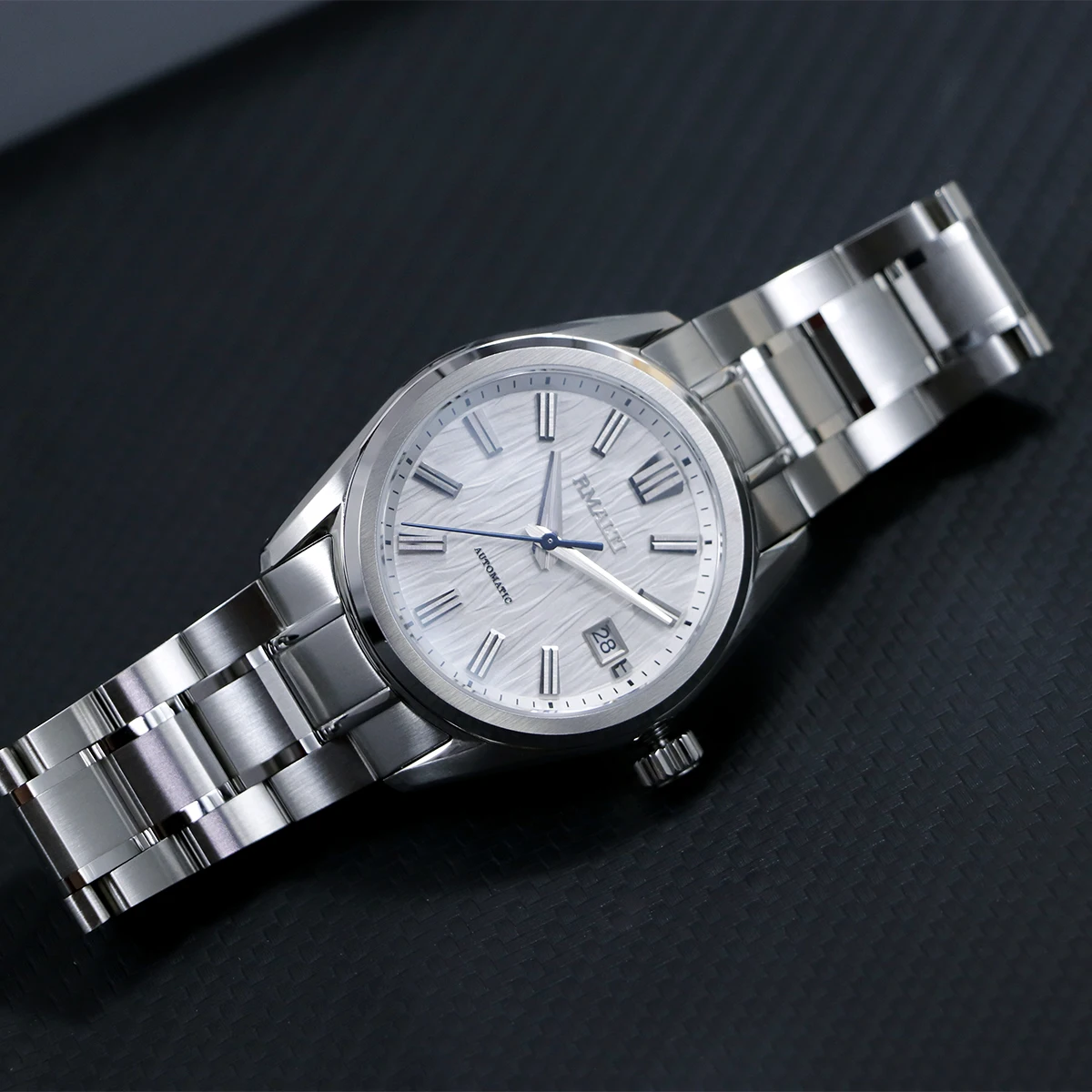
The clean lines and simplified dials that often accompany thin watch designs further emphasize this minimalist approach, creating timepieces that communicate elegance through restraint rather than complexity. The distinct differences between thin vs. thick watch case profiles reveal much about the wearer’s personal style and priorities.
Enhanced Comfort and Wearability: The Ergonomic Advantage
Beyond aesthetics, thin watches offer tangible benefits in everyday wear. The reduced bulk on the wrist improves comfort significantly, especially during extended wear periods. A thin watch moves more naturally with the wrist, avoiding the top-heavy feeling that thicker watches can create.
The lighter weight that typically accompanies thinner designs reduces fatigue during all-day wear. Many wearers describe well-designed ultra-thin watches as so comfortable they “forget they’re wearing them”—perhaps the ultimate compliment for a daily wear timepiece.
Practical advantages extend to how the watch interacts with clothing and daily activities. Thin watches avoid catching on shirt cuffs or doorframes, slide easily under sleeves, and generally interfere less with movement. This practical versatility makes them ideal for both formal occasions and everyday wear.
The comfort analysis of thin watch cases reveals that these ergonomic benefits represent a significant driver behind consumer preferences, particularly for those who wear their watches throughout active days. The classic automatic dress watches available today demonstrate how these comfort advantages can be combined with timeless design.
Classic Automatic Dress Watches, Day Date Automatic Watches, Perpetual Calendar Automatic Watches
Price range: $540.60 through $574.60 Select options This product has multiple variants. The options may be chosen on the product pageClassic Automatic Dress Watches, GMT Automatic Watches, GMT Pilot Watches
Price range: $1,240.86 through $1,463.33 Select options This product has multiple variants. The options may be chosen on the product pageAutomatic Skeleton Watches, Open Heart Automatic Watches
$98.36 Select options This product has multiple variants. The options may be chosen on the product pageClassic Automatic Dress Watches, Thin Automatic Dress Watches
$437.64 Select options This product has multiple variants. The options may be chosen on the product pageClassic Automatic Dress Watches, GMT Automatic Watches, GMT Dive Watches
Price range: $468.93 through $552.94 Select options This product has multiple variants. The options may be chosen on the product pageClassic Automatic Dress Watches, Minimalist Automatic Watches
$209.38 Select options This product has multiple variants. The options may be chosen on the product page
The Thinness Race: Brands Pushing Horological Boundaries
The pursuit of extreme thinness has evolved into a competitive arena where prestigious watch brands vie for records and recognition. This “thinness race” drives continuous innovation in micro-engineering and materials science, with each breakthrough establishing new benchmarks for the industry.
Piaget has long been synonymous with ultra-thin watchmaking, culminating in their Altiplano Ultimate Concept at a mere 0.079 inches (2mm) total thickness—including the case. Bulgari has made remarkable strides with their Octo Finissimo series, establishing multiple world records for thin watches with various complications. Richard Mille’s RM UP-01 pushed boundaries further at just 0.069 inches (1.75mm).
These achievements represent not just technical milestones but powerful marketing narratives that demonstrate a brand’s horological prowess. Creating an ultra-thin watch—especially one with complications—requires exceptional expertise and resources, making it an effective way for brands to showcase their technical capabilities.
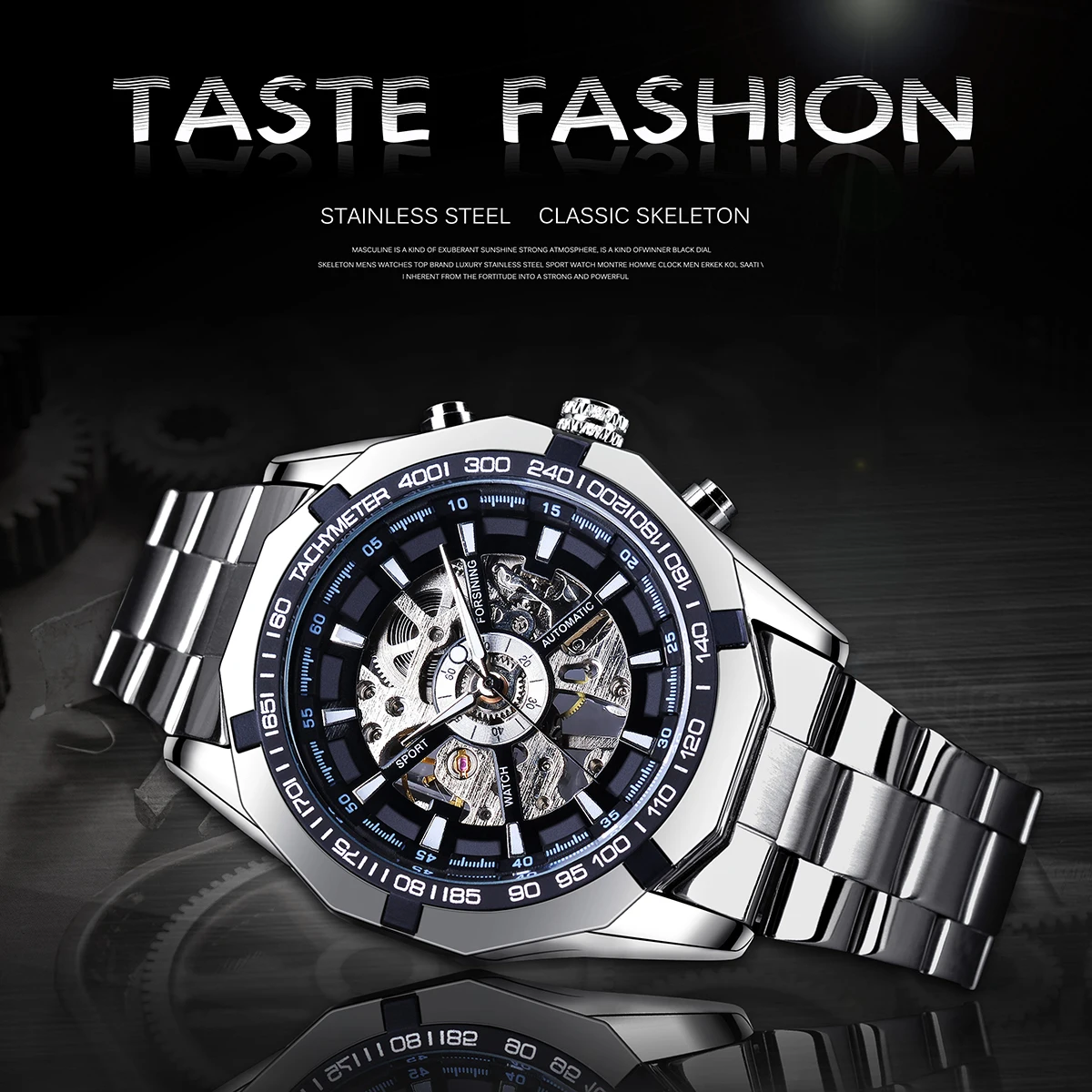
The competitive landscape continues to evolve, with both established manufactures and independent watchmakers contributing innovations to the field. The automatic dress watches category particularly benefits from these advancements, as thinness remains especially prized in formal timepieces.
Trade-offs and Challenges: The Price of Ultra-Thinness
The pursuit of extreme thinness inevitably involves compromises. As components become thinner, concerns about fragility naturally increase. Ultra-thin watches typically require more careful handling than their robust counterparts, with reduced shock resistance being a common trade-off.
Manufacturing complexity rises exponentially as thickness decreases. Components must be produced to increasingly tight tolerances, with specialized tools and techniques required for both production and assembly. This complexity translates directly to higher production costs and, consequently, higher retail prices for the consumer.
Water resistance presents particular challenges for ultra-thin watches. The space needed for adequate gaskets and sealing systems often conflicts with thinness goals, which is why many of the thinnest watches offer modest water resistance ratings compared to standard models.
Maintenance requirements typically become more specialized as thickness decreases. The delicate components and tight tolerances mean that service should only be performed by technicians with specific training and equipment, potentially increasing long-term ownership costs.
Despite these challenges, watchmakers continue finding innovative ways to mitigate traditional trade-offs. The automatic skeleton watches category highlights how brands are overcoming these challenges while showcasing their mechanical artistry.
The Future of Thin: Where Innovation Continues
The evolution of thin watches shows no signs of slowing, with continued innovation promising even more remarkable achievements. Research into new materials like graphene, carbon nanotubes, and metallic glasses may enable components that are simultaneously thinner and stronger than current options.
Advanced manufacturing technologies continue to evolve, with techniques like 3D metal printing offering new possibilities for complex component designs that would be impossible to create using traditional methods. These technologies may eventually allow for completely novel movement architectures optimized specifically for thinness.
The balance between pursuing thickness records and practical wearability remains an important consideration. While concept pieces pushing extreme thinness generate headlines, most innovations eventually find their way into more commercially viable watches that balance thinness with durability and functionality.
What remains constant is the enduring appeal of thinness as a demonstration of horological mastery. The principles established by traditional watchmaking continue to inform even the most cutting-edge designs, creating a fascinating dialogue between heritage and innovation. For those interested in exploring the nuances of different watch dimensions, the definitive watch case thickness comparison provides valuable perspective on how various models compare.
Is there a limit to how thin watches can become?
While the race toward ever-thinner watches continues, physical limits do exist. Material properties impose natural boundaries—components can only be reduced so far before they lose structural integrity or functional reliability. Current manufacturing techniques can produce components measured in microns, but as thickness decreases, strength typically suffers.
Mechanical watches face particular constraints. They require physical parts to store energy (springs), regulate timekeeping (balance wheels and escapements), and transmit power (gear trains)—all occupying space. Most watchmaking experts suggest that for full-featured mechanical watches, we’re approaching theoretical limits with current materials and technologies.
That said, concept watches continue to challenge perceived limitations. By integrating functions (using the case as the movement plate), eliminating traditional components, or completely reimagining movement architecture, watchmakers may push boundaries even further. However, the thinnest experimental watches often sacrifice practicality for extreme thinness, making them more horological art pieces than daily timepieces.
The quest for elegance in ultra-thin formal watches will likely continue finding new ways to balance extreme thinness with practical wearability, even as physics imposes ultimate limitations.
Does thinness affect a watch’s durability?
Thinness and durability have traditionally existed in tension with each other, but modern materials and design have significantly narrowed this gap. Ultra-thin watches do typically require more careful handling than their bulkier counterparts, but the difference is less dramatic than in previous decades.
Modern material innovations provide substantial improvements in durability despite reduced thickness. High-tech alloys, ceramic components, and carbon composites offer superior strength-to-weight ratios compared to traditional metals. Advanced crystal manufacturing techniques produce sapphire crystals that, while extremely thin, remain highly scratch and impact resistant.
Design considerations also play crucial roles in balancing thinness with resilience. Strategic reinforcement at stress points, shock absorption systems, and case architectures that distribute impact forces more effectively all contribute to improved durability in thin watches.
For everyday wear, most quality thin watches now offer adequate durability if treated with reasonable care. However, for extreme environments or rough usage, a more robust watch design may still be preferable. The key is understanding that while thin watches have become more durable, they still represent a design philosophy that prioritizes elegance over absolute ruggedness.
Are thin watches more expensive to produce?
Generally speaking, ultra-thin watches do cost more to produce than their standard-thickness counterparts, a difference reflected in retail pricing. This increased cost stems from several factors inherent to thin watchmaking.
Manufacturing complexity increases substantially as thickness decreases. Components must be produced to increasingly tight tolerances, requiring more precise machinery and more skilled technicians. The error margin during production becomes vanishingly small—a component variation that might be acceptable in a standard watch could render an ultra-thin movement non-functional.
Specialized skills are essential throughout the production process. From design to manufacturing to assembly, thin watchmaking requires specific expertise not needed for standard timepieces. Watchmakers assembling ultra-thin movements often work under microscopes with specialized tools, requiring additional training beyond traditional watchmaking skills.
The research and development costs for ultra-thin watches are also substantial. Creating new manufacturing techniques, testing novel materials, and developing innovative movement architectures require significant investment before production can even begin.
In luxury watch brand catalogs, ultra-thin models typically occupy premium positions, reflecting both their higher production costs and their status as demonstrations of the manufacturer’s technical prowess. For watch enthusiasts, this premium represents the cost of the extraordinary engineering and craftsmanship that makes these horological achievements possible.

